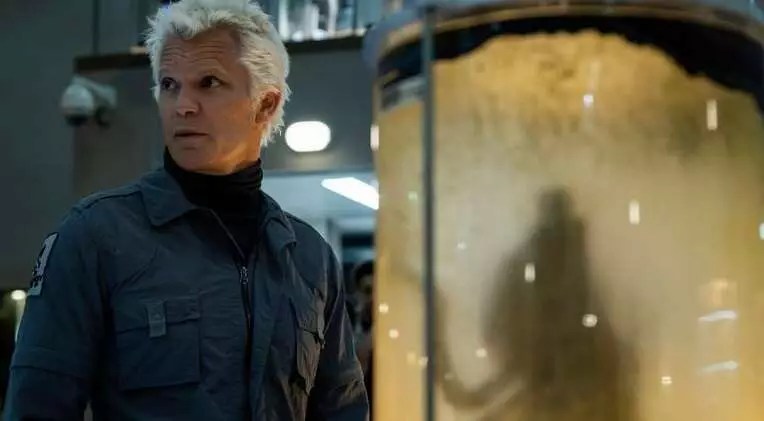The “Alien” franchise stands as one of the most iconic yet perplexing in science fiction and horror cinema. From Ridley Scott’s groundbreaking 1979 masterpiece to James Cameron’s action-packed sequel, and onward through the varied entries—each director, each era, each stylistic shift has added layers of complexity to its identity. Yet, this diversity often invites criticism and debate among fans and critics alike, as they grapple with inconsistent tones and narratives. The franchise’s evolution underscores a fundamental tension: can a series so fundamentally anchored in horror and body horror retain its core identity amid broad stylistic shifts? The answer is elusive. What remains undeniable is that every installment offers unique insights and innovations that push the boundaries of genre storytelling.
The latest attempt to reinvigorate this universe comes via FX’s “Alien” series, helmed by showrunner Noah Hawley. Hawley’s approach reveals an intriguing awareness of the franchise’s multifaceted history, leveraging its most beloved elements while attempting to forge a new path. This balancing act—honoring the nostalgia of the original while daring to reimagine—reflects a broader industry trend: the desire to modernize classic brands without losing their essence. Yet, Hawley’s candid acknowledgment that he primarily draws inspiration from the initial two films underscores a common challenge in franchise filmmaking—how to remain authentic when the franchise itself has become so sprawling and inconsistent.
Admittedly Selective: The Art of Focusing on the Classics
Hawley’s emphasis on the original “Alien” and “Aliens” suggests a conscious decision to streamline and distill the franchise’s core appeal. By choosing to center his story on the retro-futuristic vibe of these films, Hawley aims to tap into a nostalgic aesthetic that resonates deeply with fans. This choice reflects a critical understanding: aesthetics are vital to establishing tone and atmosphere. The highly stylized, practical effects of the original “Alien” contrasted with the more technologically advanced universe of “Prometheus” and “Alien: Covenant” illustrate how visual language shapes audience perception. Hawley’s preference for the retro design isn’t just about style; it underscores a desire to evoke a sense of timeless horror, as opposed to the more polished, sanitized, and sometimes less frightening look of later entries.
Revisiting the classics isn’t merely nostalgic; it’s strategic. It anchors Hawley’s narrative in a recognizable aesthetic that enhances the emotional and visceral impact of the story. By focusing on the atmosphere of the first two films, he aims to amplify the primal fears that made “Alien” so iconic—fear of the unknown, the abject, and the uncontrollable. In a landscape flooded with sci-fi, this rooted, gritty aesthetic can serve as a beacon of authenticity amid an increasingly digital and hyper-polished cinematic universe.
The Ongoing Dance with the Xenomorph Mythology
Perhaps the most compelling aspect of Hawley’s vision involves his desire to “re-mystify” the Xenomorph. The creature’s lifecycle has become increasingly complex, almost cartoonishly so, with each film expanding its mythology, often at the expense of coherence. From giant crab-like facehuggers to towering predators, the alien’s evolution has become a series of escalating mechanisms of horror—each trying to surprise the audience but risking diminishing returns.
Hawley recognizes this fatigue and seeks to restore a sense of suspense and unpredictability. He criticizes the franchise’s tendency to over-explain and thereby dilute the creature’s horror core. His goal is to craft scenarios where the audience remains uncertain, on edge, and genuinely terrified of what might happen next. This is a commendable aspiration, as suspense and mystery are the lifeblood of horror storytelling. However, whether Hawley’s new approach will succeed in restoring the franchise’s primal impact remains to be tested.
The challenge lies in balancing innovation with respect for established lore. Fans have become so accustomed to certain revelations about the creature that any attempt at re-mystification risks alienating those who crave continuity and logical coherence. Yet, Hawley’s emphasis on reinvigorating suspense suggests a willingness to risk controversy for genuine scares—all, arguably, in service of strengthening the franchise’s core identity.
Franchise Resurrection or Reinvention?
The debate over which “Alien” film is the best will endure, but Hawley’s candid reflections highlight a broader truth: franchises built on horror and speculation struggle to evolve without losing their fundamental essence. His focus on classic aesthetics and organic suspense demonstrates a desire to root the series in its original strengths while trying to avoid the pitfalls of unnecessary expansion.
Ultimately, Hawley’s approach underscores a crucial insight—timeless horror hinges on mystery, atmosphere, and primal fears. While the franchise has faced criticism for its stylistic shifts and narrative excesses, its enduring appeal is rooted in these core elements. His attempt to return to these roots may reignite the franchise’s potential; whether it does so convincingly will hinge on how well he balances familiarity with innovation.
As “Alien” continues to evolve, the conversation about its best form—whether as pure horror, sci-fi spectacle, or something in between—remains alive. Hawley’s contribution, whether ultimately successful or not, signals a thoughtful and passionate effort to bridge the franchise’s storied past with a promising future.


Leave a Reply